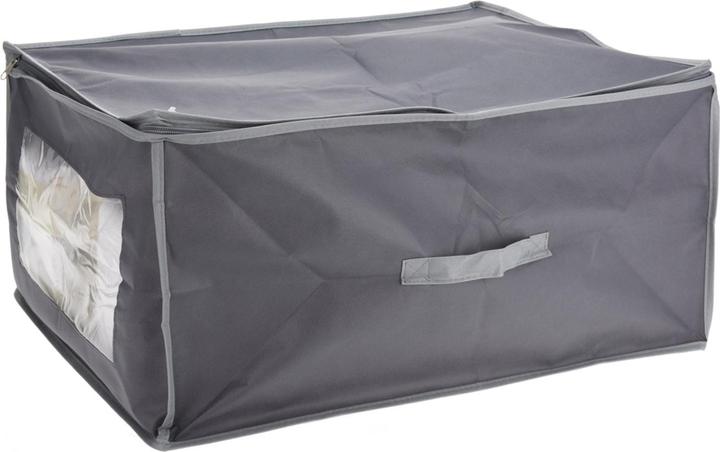

7 tips on how to store your winter wardrobe properly
Coats, jumpers and scarves are your everyday companions throughout the winter. But how do you store them properly at the end of the cold season? Read on to find out.
Already bought your first new spring outfit and it’s claiming the space of that woolly jumper in your wardrobe? With rising temperatures, many people reorganise their wardrobe, taking out and storing away winter clothes – but not always properly. The result? Holes or faded colours. Here’s how to make sure this doesn’t happen.
Wash your winter wardrobe
To protect the fabric, some clothes, such as jumpers, should be aired out rather than washed when they’re in use during winter. But before putting them away in boxes and bags for several months, you should definitely wash them. This is important to remove sweat and dander and make sure they don’t attract moths or other bugs. Check the washing instructions on the label to find out how to wash each item correctly. Some clothes need to be washed by hand, others can be machine-washed but only at low temperatures.
Debobble knitwear
Knitwear has a tendency to go bobbly. The technical term for this is pilling, which happens when fibres rub together and go matt. Use a lint brush to remove these small knots – or a fabric shaver for very stubborn bobbles. This low-cost one by Philips seems to be efficient, as 73 per cent of our buyers have given it a five-star rating.
Empty pockets
Make sure to check and empty any pockets before you store the clothes way. Remove handkerchiefs, coins and othet bits and bobs or they might leave imprints and discolouration on the fabric. If you’re lucky, you’ll find that banknote you lost a while ago.
Avoid creased and tight storage
Fold all textiles loosely to avoid creases. Rolling your winter clothes also works well, as it prevents sharp edges and creases from forming. If you have enough space, hang up individual items of clothing instead of folding them.
Store in a dry and dark place
It’s important that your clothes are completely dry before you store them in a suitable place. Damp cellars and sunny spots aren’t what you’re looking for, as you don’t want your textiles to mould or their colour to fade. Non-transparent boxes or under-bed drawers are a great choice. There are quite a few in our range – the model by Love It Store It, for instance, which is 90 × 45 × 18 centimetres large. If you’re looking for a smaller box, this one by HTI-Living might work. Its dimensions are 45 × 30 × 30 centimetres. The hard-shell box by Casativo is particularly handy, as it has wheels, making it easy to pull out from under the bed. The stable lid with handles protects your clothes.
The Superio garment bag by Cw-concept with an integrated clothes hanger is a good choice if you’d rather store your clothes hanging.
Galaxus also sells vacuum garment bags. This saves space – up to 75 per cent with the Wenko model, according to the manufacturer. The bag shrinks your clothes, so to speak, by reducing the volume. You simply suck the air out of the bag with a vacuum cleaner before closing it. This also protects fabrics from bugs. However, remember this type of storage isn’t suitable for every item of clothing. It could damage leather goods and textiles containing down and feathers, making the outer material or inner lining tear or break.
Keep bugs away
If you aren’t using a vacuum bag, add moth paper, cedar wood or lavender sachets to your clothes. They prevent pest infestation. How come? Not only sweat and dander can attract moths, but also certain materials such as wool, down or leather. The cedar wood set by Infactory can even be added to the hangers. Our Community seems to like them, as many reviews mention the nice smell.
Before you make the effort...
..to pack away your clothes, make sure it’s worth it. Haven’t worn a jumper in months? Maybe you don’t need it anymore. Instagram user @rangeroad21 has a smart trick to know which clothes to get rid of.

Source: @rangeroad21/Instagram
She starts off the year with all her clothes on hangers facing backwards i.e. with the hook behind the rail. Once she’s worn an item, she puts it back the other way round – with the hook facing forwards. At the end of the year, any clothes that are still facing backwards are the ones she’s never worn and doesn’t need to keep.
Header image: Amittzi/ShutterstockCat lady and coffee lover from up north. Always on the lookout for «News and Trends».










